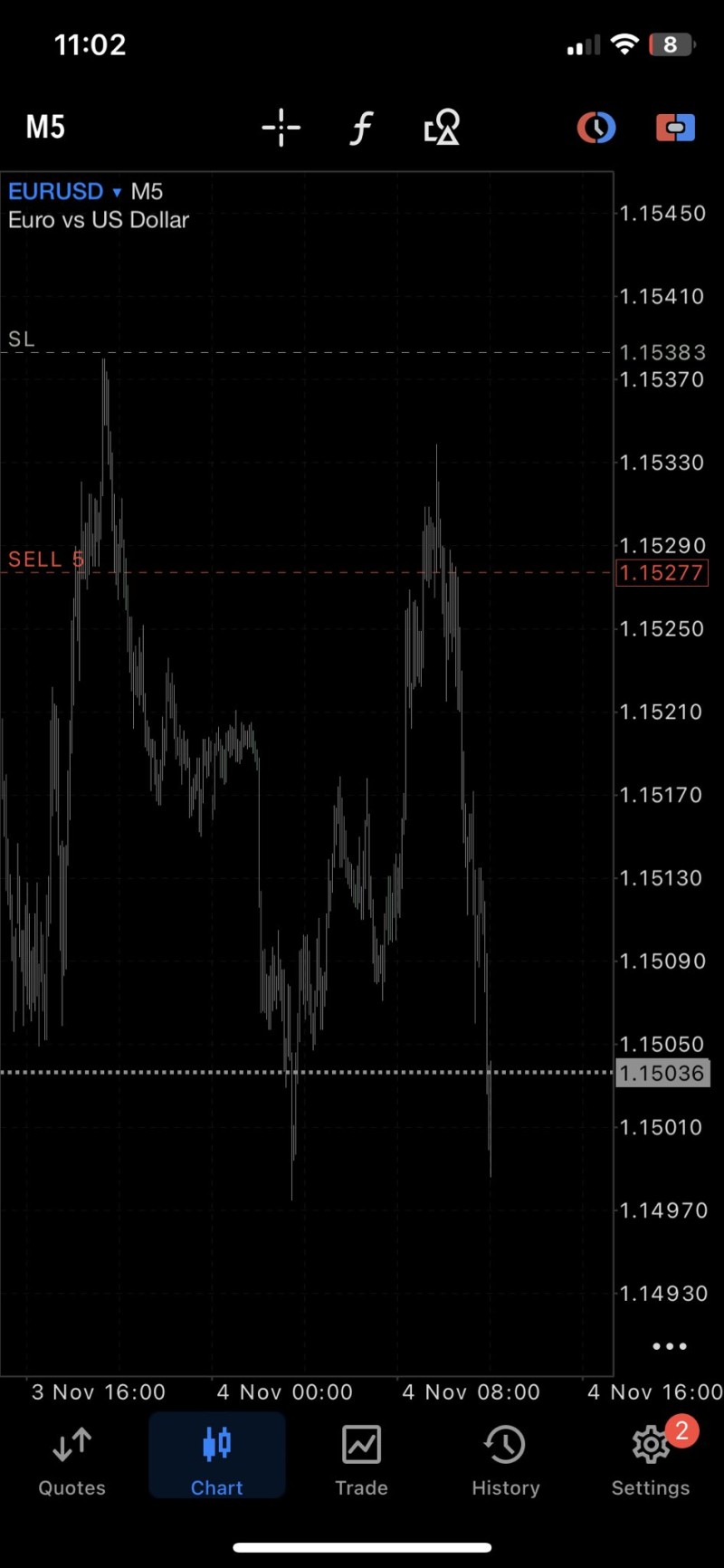The EUR/USD pair came under fresh pressure on Friday, extending its intraday slide to test the 1.1500 level—a critical short-term support zone. The move reflected heightened volatility on the five-minute chart as traders responded quickly to shifting momentum. The euro's inability to hold any meaningful upside momentum shows a fragile balance between intraday traders hunting quick entries and macro investors still watching U.S. rate signals.
Technical Overview: Sellers Take Control Near 1.1530 Resistance
Trader MrSean's approach captured the session's essence: "Hope you're reacting instead of predicting?" The M5 EUR/USD chart reveals that after an early push toward 1.1540, selling pressure intensified.

The pair quickly reversed from the 1.1527–1.1530 resistance area, forming a sharp downward move that drove prices toward 1.1503. Key short-term levels include:
- Immediate resistance: 1.1527–1.1530
- Current support: 1.1500–1.1505
- Next potential downside target: 1.1490
This pattern confirms sellers remain active above 1.1530, while buyers are defending the 1.1500 mark for now. The visible lower highs and repeated rejections suggest short-term sentiment stays bearish, with momentum favoring further downside unless the euro reclaims ground above 1.1530.
Macro Drivers: Dollar Strength Dominates
The latest dip in EUR/USD comes alongside renewed U.S. dollar strength, backed by solid economic data and expectations that the Federal Reserve will keep interest rates elevated for longer. Meanwhile, the European Central Bank's cautious stance and slower eurozone growth have limited any real recovery in the single currency. This divergence keeps EUR/USD locked in a declining bias. Intraday traders are now watching the 1.1500 level closely—a critical psychological and technical zone that could determine whether the pair stabilizes or extends its slide toward 1.1470–1.1480.
Trader Commentary: React, Don't Predict
Traders should focus on reactive strategies, waiting for price confirmation instead of trying to predict direction in advance. This principle is clearly visible in the chart's behavior, where multiple false rallies and quick reversals have caught out those trading too early. In volatile sessions like these, discipline often matters more than direction. By adapting to momentum shifts rather than forecasting them, traders can manage risk more effectively while staying aligned with short-term market structure.
 Victoria Bazir
Victoria Bazir

 Victoria Bazir
Victoria Bazir


